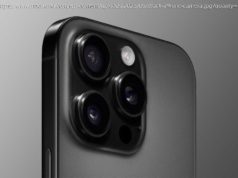The demise of Kinect is a worrying change in the options for how we can interact with our devices.
Kinect is either Microsoft’s biggest success or biggest failure, depending on how you look at it.
Kinect brought voice control to the living room long before Alexa or Google Home. It’s also just been cancelled — at least as a separate product.
The problem is perhaps that for gamers, and maybe developers, Kinect games never felt as much like the Star Trek Holodeck as we thought it was going to (not least because living rooms aren’t that big outside a few places in the US) and somehow there was never quite the momentum behind it.
So what does this mean for other novel ways of interacting with our devices? Will we use the amazing ARKit apps we’ve seen demoed for iPhone every day once the novelty wears off? I’ll measure the length of a table or the size of a box maybe once or twice a year and it will be handy to do it on a phone rather than getting out a tape measure, but beyond the industrial uses for HoloLens and the gaming VR headsets, I’m on the fence about how big VR and AR and mixed reality are actually going to be.
Maybe it’s the next iPhone — and maybe it’s the next 3D TV.
For me, the big secret of Xbox is that more people use it for entertainment than games, but gamers make a lot more noise and get a lot more attention from Microsoft. Take the original vision for Xbox One — an entertainment system that also played games, that would be as useful in the boardroom for Skype calls as in the gaming room for Halo — and look how that got walked back.
The backwards compatibility of Xbox One means gamers get to play their Xbox 360 games on the new hardware — but it never worked for the media apps like Sky TV. If you saw Xbox as a great way to have Skype and Sky and Netflix and entertainment that wasn’t games on your TV, you had to wait until those developers created new apps for Xbox One.
Along with Kinect going away, there’s another change to the way you can control Xbox. If those apps aren’t UWP, as of Fall Creators Update, they no longer have voice control.
Microsoft has been asking developers to move to UWP for Xbox apps since early 2016, and legacy apps are now losing some features, like voice control. (I haven’t been able to work out if this is for security, to improve performance, or just as an added incentive to get developers to upgrade their applications.)
Netflix already removed voice control from its Xbox app last year, which was bad news for anyone with a disability (or an elderly relative who finds remote controls difficult to use) and who liked being able to control their media by talking to their Xbox.
This month, it’s Plex, which has switched to Alexa for voice control instead of writing a UWP app, so I can no longer pick what I want to watch from the other side of the room where my sewing machine is, or pause the video as I run out of the room with my arms full. Because the ‚Xbox, select‘ and ‚Cortana, select‘ keywords no longer work in ‚legacy‘ apps, there’s no way to navigate around the screen in the app.
It’s been great to see Microsoft embrace the broad concept of accessibility over the last couple of years. It’s just good business sense; if you have a disability and you can use Windows or Xbox to make your life better, you’re another potential customer. That’s not the only benefit either; if you design for partially sighted users, the same non-visual cues make that app more useful in the car where drivers need to keep their eyes on the road.
Accessibility is being built into Windows 10 at a really fundamental level to make it more powerful. The first versions of this have been rather basic and developers have to switch to the new accessibility system as it develops, but there’s a clear commitment to make this work well for a whole range of areas and cases and abilities. But with the Xbox emphasis now being so squarely on gaming, Xbox accessibility seems to be switching to be about gaming accessibility.
With Kinect going out of production, the only way to get voice control of Xbox will be by wearing a headset — which gamers do and people who are just watching TV and videos don’t.
So perhaps it hardly matters that media applications are losing voice control like this, because unless Microsoft builds the microphone right into the console or everyone starts plugging in a webcam, the long-term future of Xbox only has voice control for gaming.
And that’s a big loss for the rest of us, because I was hoping that Xbox and Kinect would be the first step towards ambient, speech-centric, AI-enabled computing where we wouldn’t have to pull out a phone to interact with technology in a natural and friendly way.






